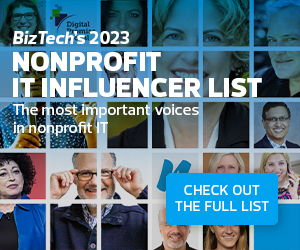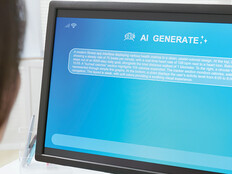Here are five ways nonprofits can use data analytics to reinforce the importance of their missions.
Use Data Analytics To Alert Donors of Their Impact
Donors want to make sure that they’re spending their money wisely, and it’s hard to argue with data that demonstrates exactly that. Sending an impact report to donors and supporters gives them evidence that the mission is being fulfilled and shows how.
An impact report might contain data about the progress you’re making on your key performance indicators and any other metrics that show you’re fulfilling your mission. For example, a nonprofit focused on ending hunger locally might highlight data indicating that there has been a shift in the level of need; an organization devoted to supporting artists might lay out the ROI of a grant-writing program that led more artists to the gifts they need to do their work.
Even in times when progress seems slow, the transparency of data can be used to assure stakeholders that their resources are being considered carefully. (See point No. 4 below about finding the narrative in data too. An off year might require a more carefully crafted story, but done right, that story can ultimately build trust.)
READ MORE: Find out how managed security services can help your IT department.
Leverage Data Analytics to Benchmark Your Results
While an impact report shows how you’re fulfilling your mission, a benchmarking report or comparative analysis shows that you’re doing it in a way that’s distinct from similar organizations. By giving context to your nonprofit’s performance within the field at large, a data-forward benchmarking report can help put your history and long-term efforts into perspective.
This can help secure large donors, but its chief audience is often internal. Board members and executives can use the data contained in a comparative analysis to discover whether the organization is fulfilling its specific mission or whether it needs to adjust its programming — or its mission — to account for the work of other organizations in the space.
DISCOVER: Find out how these CDW professional services can help you fulfill your mission.
Tell the Story of Your Nonprofit Through Data Visualization
Our brains process images 60,000 times faster than they process text. That makes data visualization a powerful tool for demonstrating how well a nonprofit is achieving its mission.
Data visualization tools such as Microsoft’s Power BI can create charts, graphs and infographics that bring home data points in a meaningful, memorable, easy-to-digest way — literally illustrating the real-world impact nonprofits are having on their constituents. These tools allow narratives to be told through clear visual representations that can then be used in marketing efforts, annual reports and outreach materials.
Showcase the Impact of Volunteers Through Data-Driven Messages
Data visualization can bring a story to life, but a traditional, word-based narrative is also made more compelling with data. For example, sharing updates on volunteer efforts assures donors that on-the-ground action is happening, but crafting those updates around how a certain concentration of volunteer labor proved to be the tipping point in a community breakthrough elevates the story from an anecdote to a message.
RELATED: See how tech for good comes to life with this CDW Exec-Connect.
Invite Your Donors and Stakeholders to Be Part of the Data
Becoming a data-driven organization means that you can discover and create your own data buckets. Using surveys and interactive polls to take the pulse of donors, community members and other stakeholders engages those partners not only in the data but in the mission. When people are asked for their opinions, they become more invested in the outcome, fostering a sense of ownership over and care for the cause.











